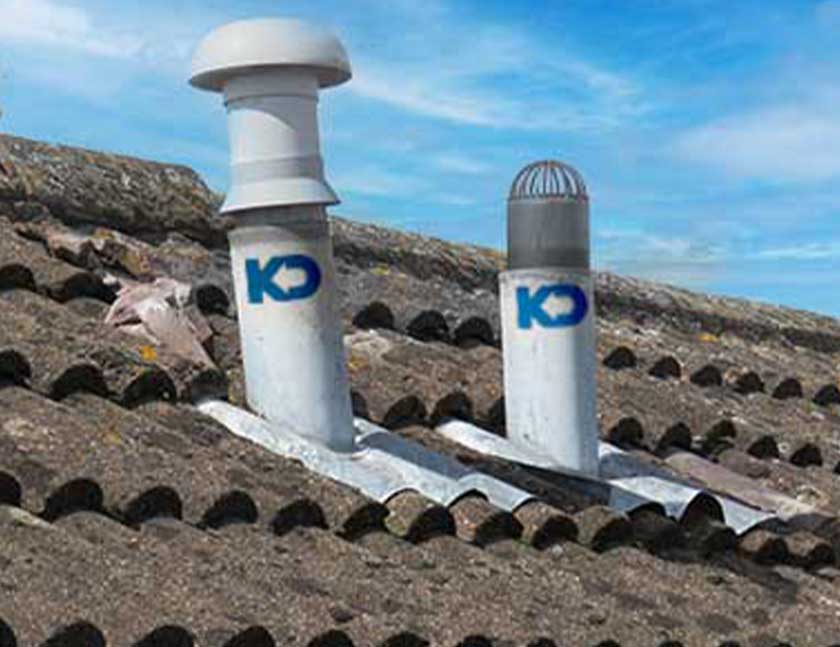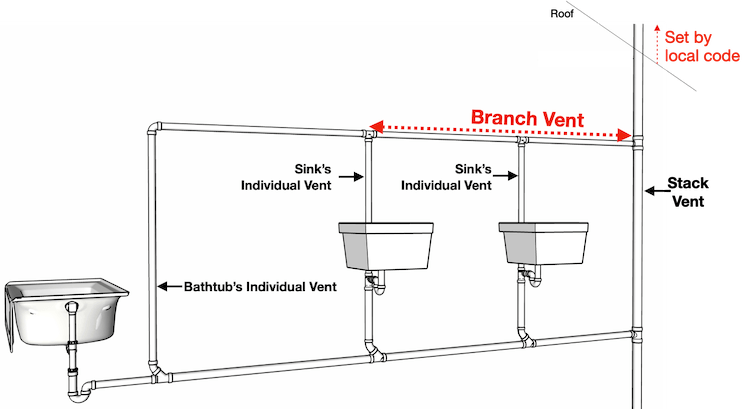The Importance of Proper Ventilation in Building Plumbing Systems
The Importance of Proper Ventilation in Building Plumbing Systems
Blog Article
Do you find yourself looking for help and advice concerning What Are Plumbing Vents and Why Are They Important??

Appropriate ventilation in plumbing systems is frequently forgotten, yet it is important for preserving the performance and safety of your home's plumbing. Air flow helps regulate atmospheric pressure, stop the accumulation of hazardous gases, and ensure the reliable elimination of waste. In this overview, we will discover the importance of correct plumbing air flow, just how it works, and the advantages it brings to your pipes system.
Understanding Air Flow in Pipes
Air flow in plumbing refers to the network of pipes that permit air to stream via the drain system. These vents offer multiple objectives, including controling atmospheric pressure within the pipes, preventing sewage system gases from going into the home, and assisting in the smooth flow of wastewater.
How Air Flow Works in Plumbing Systems
Air Pressure Law
Appropriate air flow preserves balanced air pressure within the pipes system. When water flows via pipes, it displaces air. Without ample air flow, this variation can produce unfavorable stress, leading to slow drains or siphoning of water from catches, which can create undesirable odors to permeate into the home.
Stopping Sewer Gas Buildup
One of the most critical features of pipes vents is to stop sewer gases, such as methane and hydrogen sulfide, from collecting within the home. These gases can present severe health dangers and are extremely flammable. Vent pipes enable these gases to leave securely outdoors.
Helping in Waste Removal
Air flow assists in the reliable elimination of wastewater by avoiding airlocks in the drainage system. When air can move openly with the vents, it enables water and waste to move efficiently with the pipes, lowering the risk of obstructions and back-ups.
Types of Plumbing Vents
Key Heap Vent
The main stack vent, also called the vent pile, is the main vent in a plumbing system. It prolongs from the primary drain line up with the roof, allowing gases to run away and fresh air to go into the system.
Branch Vent
Branch vents link to the main pile air vent and serve private fixtures, such as sinks, bathrooms, and showers. These vents make certain that each fixture has appropriate air flow to operate correctly.
Air Admission Valve (AAV).
An Air Admission Shutoff (AAV) is a one-way shutoff that allows air to get in the plumbing system without the demand for a typical air vent pipe expanding through the roofing system. AAVs are frequently utilized in renovations or locations where installing a basic vent is not practical.
Indications of Poor Air Flow in Pipes.
Slow Draining Fixtures.
If your sinks, bathtubs, or commodes are draining gradually, it could be an indication of poor air flow. Poor air flow can develop a vacuum effect, making it hard for water to drain pipes correctly.
Gurgling Appears.
Gurgling noises coming from drains pipes are commonly an outcome of air being sucked with water catches because of adverse pressure in the pipelines. This is a clear indication of inadequate ventilation.
Unpleasant Odors.
Sewage system smells inside your home are a red flag that your plumbing system is not appropriately aerated. This might indicate that sewer gases are not being adequately aired vent outside, bring about potentially harmful problems.
Typical Air Flow Mistakes.
Insufficient Vent Sizing.
Utilizing small air vent pipelines can lead to poor air flow and pressure inequalities in the system. It's vital to use vents that satisfy the details needs of your plumbing system.
Improper Vent Placement.
Positioning vents also far from the fixtures they serve can decrease their performance. Correct positioning makes certain that air can stream openly and effectively with the system.
Ignoring Code Requirements.
Building regulations offer particular guidelines for pipes air flow. Neglecting these codes can result in a system that falls short to work appropriately and might lead to pricey repair work or carcinogen.
Benefits of Proper Air Flow.
Enhanced System Performance.
Correctly aerated pipes systems operate more effectively, with less clogs, faster draining pipes, and much less stress on the pipelines. This performance extends the life expectancy of the pipes system.
Improved Air Top Quality.
By avoiding sewer gases from entering your home, appropriate ventilation adds to much better interior air high quality, making your living setting healthier and much more comfortable.
Stopping Water Damage.
Appropriate ventilation aids stop water from being siphoned out of traps, which can lead to drain gases entering the home and creating water damages gradually.
Actions to Guarantee Correct Ventilation.
Consulting Plumbing Codes.
Always get in touch with neighborhood plumbing codes when designing or customizing your pipes system. These codes offer the needed standards for proper airing vent and guarantee your system satisfies security standards.
Normal Evaluation and Maintenance.
Regular assessments can aid identify potential ventilation issues before they end up being major issues. Maintenance tasks, such as cleaning vent pipelines and looking for obstructions, are crucial for maintaining the system in good working order.
Expert Setup.
For new installations or significant adjustments, it's smart to hire a professional plumber. They have the know-how to guarantee the ventilation system is appropriately created and mounted according to code.
Final thought.
Appropriate air flow is a vital element of any plumbing system, making certain that it operates successfully and securely. By understanding the importance of ventilation, recognizing the indications of bad ventilation, and taking actions to maintain your system, you can prevent costly concerns and shield your home's air quality.
4 Things You Should Know About Your Plumbing Vents
What Plumbing Vents Are
Also called a vent stack, a plumbing vent is a vertical pipe attached to your drain line that runs through your roof. The plumbing vent pipe, or plumbing air vent, removes gas and odors from your plumbing system and allows fresh air to enter the pipes, helping the water to flow out of the drain pipes.
What Plumbing Vents Do
Plumbing vents have two basic functions. One of which is to allow unpleasant smelling wastewater and sewer gasses to escape your plumbing system instead of entering your home. Plumbing vent pipes are typically located on roofs, away from windows, to ensure the fumes exit the home completely.
The other function of the plumbing vent is to move fresh air into your plumbing system. This helps move water through every plumbing fixture in your house, like toilets and sink drains. Think of the way in which you need to let a little air into the bottle as you pour soda in order to make the drink flow smoothly.
Different Types of Plumbing Vents
True vent: This is the most common vent option. In simplest terms, a true vent is a vertical pipe attached to your drain line that exits through the roof. They often function as the main vent that other fixtures can connect to. Re-vent pipe or auxiliary vent: Attached to the drain line near specific plumbing fixtures, re-vent pipes run up and over to connect to the main vent. Common vent: Two plumbing fixtures installed on opposite sides of a wall are typically tied into the vent stack using something known as a sanitary cross. Wet vent: This venting option operates as a drain pipe and a vent at the same time. Wet vent drainage systems drain water from one fixture while venting the air from another. Although they’ve been used for over 100 years, wet vent systems have only recently been added to the plumbing code in many areas. If you’re planning on installing one in a bathroom remodel, make sure you check your local code prior to construction. Loop vent: For free-standing fixtures like kitchen island sinks, loop vents are ideal. These vent pipes run under the floor, rise from the P-trap, and create a loop inside the cabinet sink. Air admittance valve: An AAV is a one-way mechanical valve typically installed at the site of the plumbing fixture. AAVs allow venting to occur without having to tie into a larger venting system. They’re ideal for venting fixtures where you aren’t able to easily connect to an existing vent system. Common Plumbing Vent Issues
Although vent pipes typically don’t have water flowing through them, they’re still subject to many typical plumbing issues. For example, clogs are one of the most common problems associated with sewer vent pipes. If your vent pipe gets clogged, all of your plumbing fixtures tied into the vent stack will be affected.
A sink with a slow drain that bubbles and gurgles or a strong sewage smell around your toilet are both indicators that your toilet vent pipe is clogged. Because most vent pipes exit through the roof, old leaves, twigs or even a bird’s nest could be clogging the pipe.
Clogs in your vent pipe system cause a buildup of negative pressure, meaning that water won’t be able to flow out of your home very well. It’s similar to putting your finger over the opening of a straw to trap water inside. When you remove your finger, the water is able to flow out of the straw.
If you suspect you have any blockage in your vent, make sure you have a professional come examine the situation. Left unchecked, a blocked air vent can lead to other costly repairs, like leaks and sediment buildup.
Under Pressure
Pipe vents are essential aspects of a home’s plumbing system. Owning a home means learning about all sorts of things you never put much thought into before. But by understanding as much as you can about the important systems of your home, you can keep those budgets intact and those anxiety levels low.
https://www.homeserve.com/en-us/blog/home-improvement/plumbing-vents/

I am just very enthusiastic about What Is a Plumbing Vent and Why Is It Important and I hope you enjoyed reading the entire blog entry. If you enjoyed reading our blog entry if you please consider to share it. I praise you for being here. Please come by our site back soon.
Additional Information Report this page